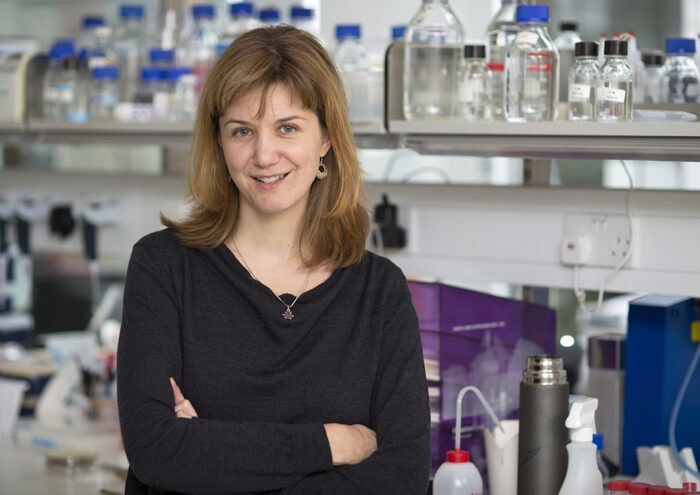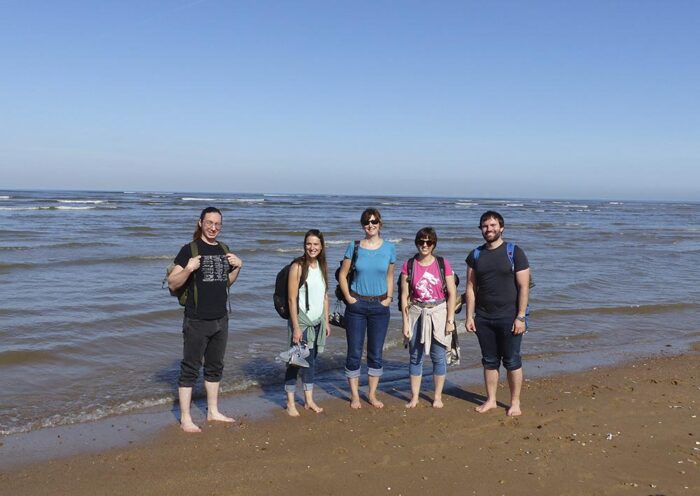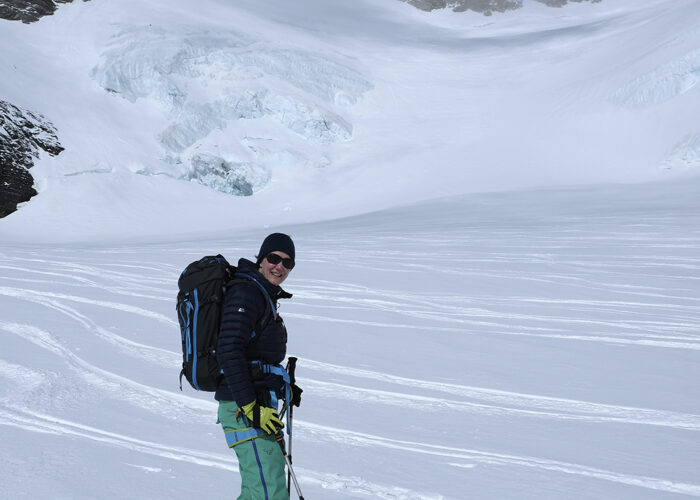Next in our series of Group Leader profiles based on interviews with science writer and LMB alumna, Kathy Weston, is a profile of Wanda Kukulski, a Group Leader in the LMB’s Cell Biology Division.

Having a view into the sheer beauty of biological macromolecules is one of the nicest perks of being an electron microscopist, and it’s what got Wanda Kukulski into her present life. Wanda, the 2018 winner of the Royal Microscopical Society’s Alan Agar Medal, first encountered electron microscopy as an undergraduate at the Biozentrum in Basel, where she was entranced by the images of bacteriophages she produced during a structural biology practical.
Wanda arrived at the LMB in January 2015 to start her own lab. The LMB was somewhere Wanda had known about since the beginning of her PhD in biophysics at the Biozentrum, when she’d been inspired by Richard Henderson and Nigel Unwin’s seminal work on electron microscopy of membrane proteins. After her PhD, Wanda did a postdoc at the European Molecular Biology Laboratory (EMBL) in Heidelberg, developing methods to study membranes and their proteins by correlative light and electron microscopy.

Membranes are everywhere, acting as boundaries around and inside cells, but also as functional units, intimately involved in crucial activities such as cellular energy generation, transport, and waste disposal. Wanda’s lab studies the architecture of membranes by cutting slices through single cells that are ten times thinner than spider silk, and then using cellular electron tomography – 3D electron microscopy – coupled with light microscopy to reconstruct an image in exquisite detail. Correlative light and electron microscopy is a relatively new technique, and especially when combined with electron cryo-tomography, what you can see is spectacular: “It’s like watching wildlife channels”, Wanda says. “The cell is so rich, and it’s really beautiful – it’s quite easy to get distracted from what you’re supposed to be looking at as there’s so much to see!”
When she decided to hit the job market during her postdoc, one of her mentors gave her what she says is some of the best advice she’s ever had: “He told me, ‘it’s not up to you to judge yourself; let the others judge. Don’t even think about whether you are good enough, just put yourself out there.’ It made me see I should just talk about the work I loved”. Wanda’s career strategy is simple: “I’ve always let curiosity drive my scientific life, and I love that – it feels like freedom”, she says. “That’s how science should be, and the LMB in particular is very good at giving you this feeling.” In the lab, Wanda operates a culture of transparency and mutual support, trying to talk about everything very openly, including the notion that success in science is not continuous. “When someone gets to group leader level, you don’t often hear about the path that led them to where they are”, she says.

Wanda has enjoyed being a junior group leader in the Cell Biology Division at the LMB, with senior people across the LMB always happy to have a coffee and chat. “They really care about how the junior people are doing”, she says. Wanda has also been impressed at their efforts on her behalf in the outside world: “When I’m invited to give talks, sometimes I can really tell that someone here has suggested me”, she says. “I think that they’re really good at supporting young group leaders here.”
Wanda is now taking her experiences from the LMB to the University of Bern, Switzerland, when she moves there at the end of April 2020 to be a professor of biochemistry and group leader at the Institute of Biochemistry and Molecular Medicine.
This article in based on an interview by Kathy Weston, February 2019.